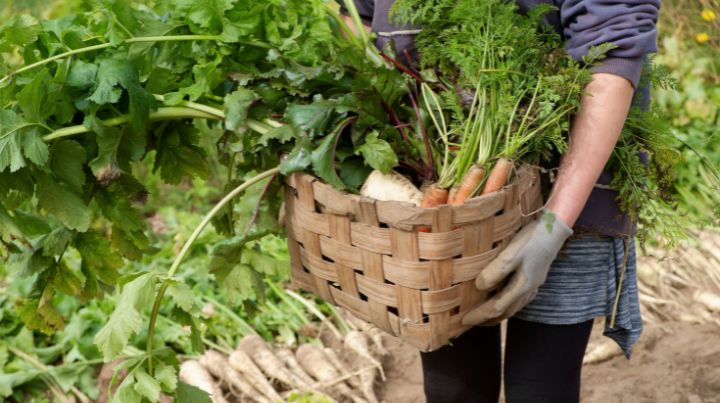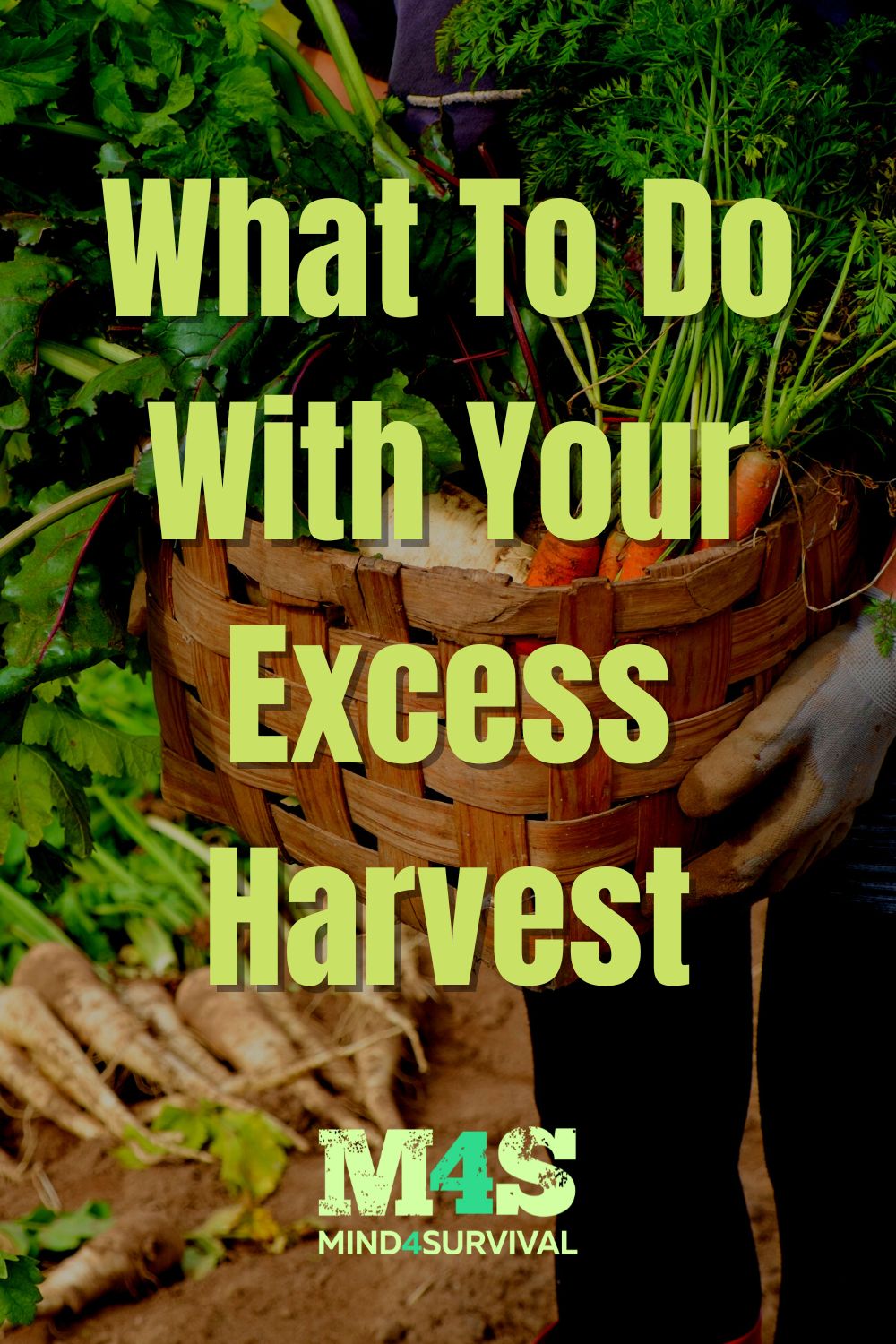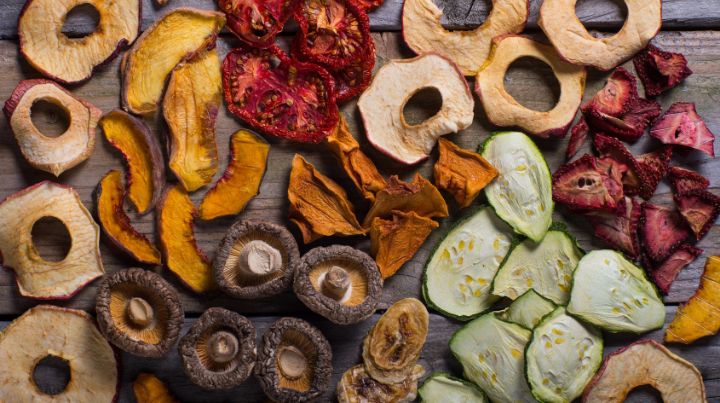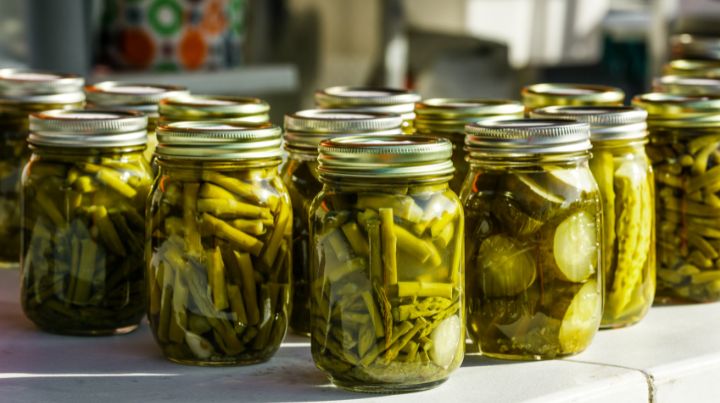What To Do With Your Excess Harvest

As the days darken, many of us are harvesting the last of our garden produce and putting the beds to sleep for the winter. You might be wondering what to do with the produce you can’t fit in your fridge; I know many people simply let things rot when they can’t get to storing them or can’t think of how to use the six pumpkins they grew, mostly because their kids thought they looked cool.
Use Everything!
Don’t toss anything! Grocery store prices increased 13% between September 2021 and September 2022. At the same time, between 30 and 40% of the food produced in the U.S. winds up in landfills. We’ve been taking cheap, abundant food for granted for far too long, and those days will be over soon.
We’ve had disastrous droughts, fertilizer shortages, and now a crash in diesel inventory to worry about. Growing food has been more difficult than usual this year, and with the problems in diesel supply, transporting it may soon become a lot more expensive, too. Most of us can’t conjure more money out of thin air; we will need to be as thrifty as possible, including getting creative with garden surpluses. If you had a successful garden this year and have more of one vegetable than you know what to do with, there are ways to use up anything.
Prioritize Your Items
If you are looking at your first stretch of really cold weather, take a look at what you have, and make a plan based on what will rot first and what will keep longest without much attention.
You can always toss excess food in the freezer to use later, but if your freezer space is restricted, there are a lot of crops that stay good for months without being frozen. For example, I’ve kept pumpkins on the top shelf of my cellar for two to three months at a time when the temperature is in the upper 50s, and they’ve kept just fine. Some root crops, like carrots and rutabagas, can stay in the garden until the temperature drops below 20, as long as they’re buried under a thick layer of straw. I kept rutabagas in my garden until January last year because it didn’t get super cold until then. I just dug them out as needed.
Of course, some things do need to be frozen to keep more than a week or two. But there are ways to save space. With zucchini, for example, you can shred it in a food processor and then freeze it. Thaw it the next day and press it; you’ll drain a lot of excess liquid, which you’d probably need to drain for most recipes anyway. Then compress and re-freeze. You’ll take up less room in the freezer and be ready when you do decide to make that zucchini bread.
Dehydrate Excess Harvest Produce
Some vegetables dehydrate exceptionally well. I’ve been sun-drying tomatoes for years, though, of course, the ability to sun-dry mostly depends on your climate. Unless you live on the High Plains or in the Southwest, it’s probably too humid most years.
But these nifty little gadgets are great. A family friend gave me a Nesco dehydrator last year, and I’ve been able to dehydrate all kinds of things with it. I’ve done jerky from both beef and venison, as well as dried fruit. This year, I got an unexpected amount of celeriac from my garden. The roots will stay in the garden for a few months, but it’s dropped below freezing enough that I’ve needed to cut off the tops. I’m currently drying the tops in the dehydrator to use as I would use celery to season soups throughout the winter.
You can dehydrate just about anything, but again, because some things keep so well in cool temperatures, look at your garden surplus and determine what will rot first. Make a plan to dehydrate, freeze, ferment, or can, based on what is most likely to spoil first.
Canning for Preservation
If you want to attempt canning produce from your garden, be aware that the overwhelming majority of vegetables are too low-acid for water-bath canning. The only vegetables I ever can are tomatoes because they are high in acid and fairly easy to can safely. It is possible to can things such as beans, peas, and squash, but you need a pressure canner. You also need to thoroughly research how to use it properly; it would be best to read at least one book on the subject or attend a class. Home-canned vegetables are the most common cause of botulism in the U.S. If you want to try it, make sure you do your homework first.
Having said that, learning to can is a worthwhile skill, and the biggest reason I don’t can vegetables is because I don’t like the taste, not because I’m afraid of using a pressure canner. I have a pressure canner, but I use it for bone broths. If you have a surplus of veggies, and you don’t mind the taste of them canned, it might be time to take the next step in your self-sufficiency journey and learn how to use a pressure canner.
My personal favorite book on the subject is Putting Food By, by Hertzberg, Greene, and Vaughan The USDA offers a comprehensive online guide to safe home canning, as well. If you’re a hands-on person, many state extension offices also offer classes on home canning and equipment checks if you’re afraid something isn’t working properly. If you’re unsure of something, just ask! Whether it’s making a phone call to an extension office or posting a question on an online forum, a lot of people have experience in preserving their own food and are happy to talk about it.
Consider Bartering
And don’t forget about bartering. If you’re overwhelmed with your harvest but don’t have freezer space, $100+ to spend on canning and/or dehydrating equipment, or time to learn, check in with your friends and neighbors. Maybe you’re overwhelmed with cucumbers while your neighbor is overwhelmed with tomatoes. Help each other out, and you’re both well on the way to tasty Mediterranean salads. And if friends have helped you out in the past, it might be time to repay those debts.
I hate using the term “social credit,” because of the actual, official social credit systems in place in some countries, but that is a potential use for garden surplus as well. If you have extra produce, being generous within a circle of friends and neighbors can help your social credit in the long run. Certain neighbors help me with mechanical issues; they’re on the top of my list when I have extras of anything. Part of prepping is having a network, and being food-generous with trusted friends can help facilitate the formation of your own little community.
Is It Really Worth It?
You might be wondering, is it really worth it to go through all this trouble for a few dollars’ worth of vegetables that my kids don’t even like that much?
Yes. First of all, if you’re trying to trim your budget (and who isn’t these days?), snack food may be sucking up a large portion of your grocery budget. You can turn a lot of veggies into snacks. We all know about zucchini bread, which I really enjoy though some people get tired of it. But have you ever tried double chocolate chip zucchini bread? I’ve been using this recipe for years. I use coconut oil for the vegetable oil, and it tastes like a dessert, not a vegetable side dish.
Many of the snacks and desserts at my house are vegetables in disguise. I don’t buy prepackaged snacks; I make big batches of muffins and then freeze them, and those are what the kids bring to school. Along with converting the above recipe for double chocolate zucchini bread to muffin form, we also make carrot-nut muffins using a recipe similar to this one. We do pumpkin muffins, pumpkin spice cake, and pumpkin pancakes. All of these recipes taste good, are fairly filling, and feature ingredients that would otherwise get thrown away.
Also, remember that you can often substitute one item for another in many recipes. Are you in the mood for pumpkin pie, but you’ve only got acorn squash in your garden? You can substitute all kinds of winter squash in pumpkin recipes. I’ve made that double chocolate zucchini bread with shredded carrots instead of zucchini; it didn’t taste that different.
Many of the above recipes call for vegetable oil; I usually substitute either lard or coconut oil. Lard, because I have raised pigs and I have a lot of it; coconut oil, because it’s one of those awesome prepper foods with a naturally long shelf life. I always keep a lot of it on hand, and it goes well in many recipes. It’s also healthier.
And don’t forget about soups. There’s a lot more wiggle room than you might think. Take minestrone, for example. You can get dozens of different recipes online, and they’ll probably all taste pretty good. It was traditionally a vegetable soup made with meat stock, some beans and rice or pasta, and whatever vegetables and herbs were in the garden at the time. Good quality stock, beans, and whatever is in your garden can make a cheap, tasty, filling meal.
Harder times mean that it’s important to be thrifty, but it’s important to find things to enjoy, too. Making meals out of food you’ve grown yourself is uniquely satisfying. It’s healthier for your body than most prepackaged stuff from the store, and the confidence you gain from learning new skills is healthier for your mind, too.
My part of the country has never been at the top of the food distribution list; even before 2020, when there was plenty of food in the stores, you couldn’t be super picky about the specific variety of apple or your favorite brand that big city stores always had. Since 2020, it’s been kind of a crap shoot as to what’s available, and that will only get worse. The vast majority of us are going to have to get used to eating what’s available, if we aren’t already, and a great way to start is getting creative with extra produce from your garden.
Additional Resources:
- Start Developing a Barter Mindset Right Now
- Edible Landscaping: Food Hidden in Plain Sight
- SHTF Food Storage Tips for Building a Stockpile
- Best Freeze Dryer for Sale: 7 Buying Tips & What to Know!

Don't Miss Out!
Join the thousands of people who rely on Mind4Survival preparedness advice by subscribing to our FREE newsletter.
- Practical preparedness information
- Zero Spam
- < 0.25% of people unsubscribe




Join Mind4Survival!
Stay informed by joining the Mind4Survival! 100% Secure! 0% Spam!
Follow Us!
Affiliate Disclosure
Mind4Survival is a free, reader-supported information resource. If you make a purchase through our link, we may, at no cost to you, receive an affiliate commission.



